Osteopenia
Medically reviewed by Drugs.com. Last updated on Aug 4, 2025.
What is osteopenia?
Osteopenia is a condition that causes bone loss and low bone mineral density (BMD). Low BMD can weaken your bones and increase your risk for fractures. Osteopenia does not cause signs or symptoms. You may not know you have it until you break a bone. Osteopenia must be managed or treated so it does not worsen and become osteoporosis. Osteoporosis is a serious condition that causes bones to become weak, brittle, and easily fractured.
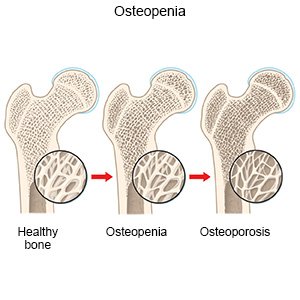 |
What increases my risk for osteopenia?
Your risk increases as you age and lose bone. The following may also increase your risk:
- Lack of weight-bearing exercise, or being bedridden
- Loss of testosterone (in men), or loss of estrogen, such as from menopause (in women)
- Family history of osteopenia or osteoporosis
- Alcohol abuse or smoking cigarettes
- Long-term use of a steroid medicine or an anticonvulsant medicine
- An eating disorder, such as anorexia
- Not enough calcium and vitamin D
Related medications
Treatment options
The following list of medications are related to or used in the treatment of this condition.
How is osteopenia diagnosed and treated?
- A bone scan may be used to measure your bone density (thickness) and bone mass (amount). You may need a bone scan if you are older than 65 years or you are in menopause. A bone scan may be used if you are younger than 65 years and at increased risk for fractures. A dual-energy x-ray absorptiometry (DXA) is a type of bone scan that measures the mineral content in your spine, hip, or forearm. DXA will give a number, called a T-score, based on how much bone mineral you have. The T-score shows your risk for fracture.
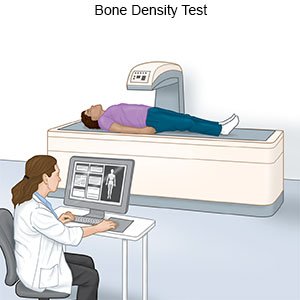
- Treatment depends on your risk for fracture. If your risk is low, you may only need to make exercise, nutrition, and other lifestyle changes to manage osteopenia. The changes can help prevent more bone mineral loss and reduce your risk for fractures. If your risk is high, you may be given medicines to help strengthen your bones, prevent bone breakdown, or increase bone formation.
What can I do to manage or prevent osteopenia?
- Exercise as directed. Do weight-bearing exercises, such as brisk walking, dancing, or yoga. Weight-bearing exercises help build or maintain bone. Exercises such as swimming and bike riding are non-weight-bearing and will not build or maintain bone. Weightlifting also helps strengthen bones and build muscle. Extra muscle can help protect your bones. Your healthcare provider may recommend weightlifting 3 times per week as part of your exercise routine.
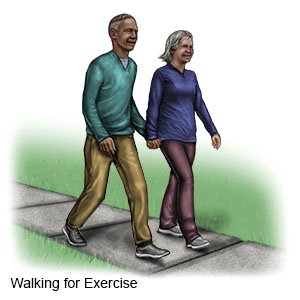
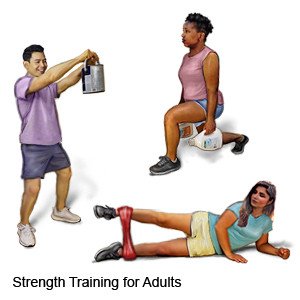
- Increase calcium and vitamin D as directed. Calcium and vitamin D work together to help build bone. The body deposits calcium into the bones until about age 30. You will then need to get enough calcium and vitamin D to maintain what your bones are storing. Your healthcare provider may tell you to eat more dairy products, such as milk and cheese, for calcium. Spinach, salmon, and dried beans are also good sources of calcium. Cereal, bread, and orange juice may be fortified with vitamin D. You also get vitamin D from exposure to sunlight. Your healthcare provider may also suggest a calcium or vitamin D supplement. Do not take supplements unless directed.
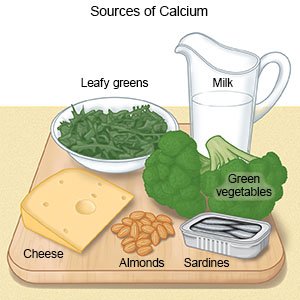
- Limit or do not drink alcohol as directed. Alcohol can take calcium from your bones and increase your risk for fractures. Ask your healthcare provider if it is safe for you to drink alcohol. Women should limit alcohol to 1 drink per day. Men should limit alcohol to 2 drinks per day. A drink of alcohol is 12 ounces of beer, 5 ounces of wine, or 1½ ounces of liquor.
- Do not smoke. Nicotine can damage blood vessels and make it more difficult to manage your osteopenia. Smoking also affects bone density and increases your risk for bone fractures. Do not use e-cigarettes or smokeless tobacco in place of cigarettes or to help you quit. They still contain nicotine. Ask your healthcare provider for information if you currently smoke and need help quitting. Ask your healthcare provider for information if you need help quitting.
- Prevent falls. Decrease your risk for falling by removing items from the floor and removing loose carpets. Turn the lights on where you will be walking.

Care Agreement
You have the right to help plan your care. Learn about your health condition and how it may be treated. Discuss treatment options with your healthcare providers to decide what care you want to receive. You always have the right to refuse treatment. The above information is an educational aid only. It is not intended as medical advice for individual conditions or treatments. Talk to your doctor, nurse or pharmacist before following any medical regimen to see if it is safe and effective for you.© Copyright Merative 2025 Information is for End User's use only and may not be sold, redistributed or otherwise used for commercial purposes.
Learn more about Osteopenia
Treatment options
Care guides
Symptoms and treatments
Further information
Always consult your healthcare provider to ensure the information displayed on this page applies to your personal circumstances.
